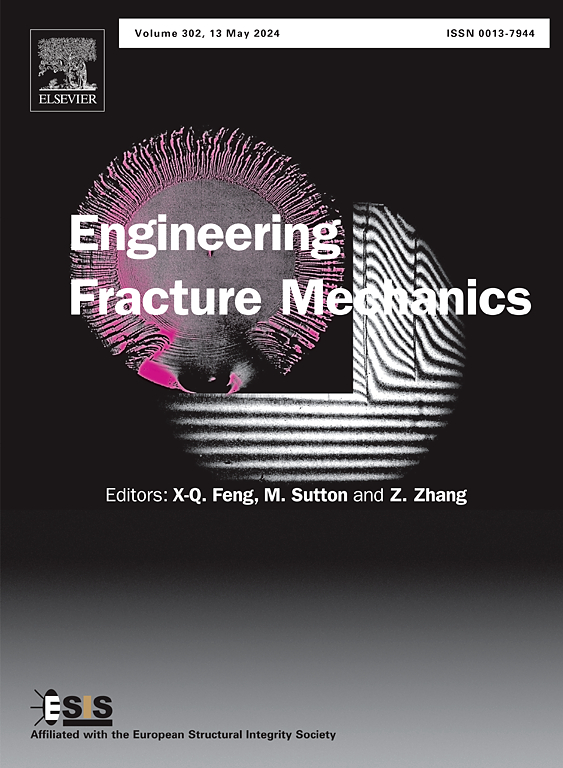Atomistic/mesoscopic approach to the grains boundaries fracture: The case of UO2
IF 4.7
2区 工程技术
Q1 MECHANICS
引用次数: 0
Abstract
In irradiated polycrystalline uranium dioxide (UO), the pressure generated at high temperature by the noble gases in the intergranular bubbles as well as the thermomechanical stresses due to temperature gradients cause the fracture of the grain boundaries. In this study, starting from an atomistic identification of the fracture energy, one analyzes through mesocopic calculations the behavior of grain boundaries under uniaxial tensile loading up to fracture. In these mesocopical simulations, a cohesive-volumetric approach using concepts of Frictional Cohesive Zone Models (FCZM) and numerical modeling methods based on Non-Smooth Contact Dynamics (NSCD) is employed to simulate grain boundary rupture with the presence of a void under uniaxial tensile loading. The associated computational code, called XPER (eXtended Finite Element method and PERiodic homogenization), allows the analysis of fracture at grain boundaries. A parametric study on the void size and shape is conducted. Voids with sharp edges promote stress concentration, facilitating rupture initiation. The observed trends regarding the variation in void size are similar to the Griffith model, and the results align with experimental findings.
晶界断裂的原子/介观研究:以UO2为例
在辐照多晶二氧化铀(UO2)中,晶间气泡中的惰性气体在高温下产生的压力以及温度梯度引起的热机械应力导致晶界断裂。在本研究中,从断裂能的原子识别出发,通过细观计算分析了单轴拉伸载荷下直至断裂的晶界行为。在这些细观模拟中,采用摩擦内聚区模型(FCZM)的概念和基于非光滑接触动力学(NSCD)的数值模拟方法,采用内聚-体积方法模拟了单轴拉伸载荷下存在空洞的晶界破裂。相关的计算代码称为XPER(扩展有限元法和周期均匀化),允许分析晶界处的断裂。对孔隙的大小和形状进行了参数化研究。边缘锋利的孔洞促进应力集中,有利于破裂的发生。观察到的孔隙尺寸变化趋势与Griffith模型相似,结果与实验结果一致。
本文章由计算机程序翻译,如有差异,请以英文原文为准。
求助全文
约1分钟内获得全文
求助全文
来源期刊
CiteScore
8.70
自引率
13.00%
发文量
606
审稿时长
74 days
期刊介绍:
EFM covers a broad range of topics in fracture mechanics to be of interest and use to both researchers and practitioners. Contributions are welcome which address the fracture behavior of conventional engineering material systems as well as newly emerging material systems. Contributions on developments in the areas of mechanics and materials science strongly related to fracture mechanics are also welcome. Papers on fatigue are welcome if they treat the fatigue process using the methods of fracture mechanics.

 求助内容:
求助内容: 应助结果提醒方式:
应助结果提醒方式:


